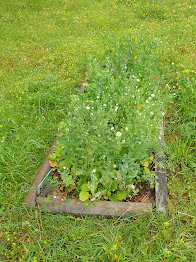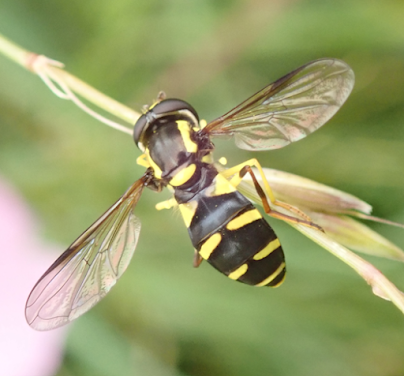Hitchin Cemetery June 2022
Hitchin Cemetery June 2022
The cemetery in June was looking about at its best, with sunshine, flowers and the buzz of insects. For the first time two guided tours took place, each lasting about an hour, which gave people a chance to see inside the chapel, look at some notable graves and find out about some of the wildlife and why the cemetery is an important asset to the town. There are two more tours planned this year on Sunday 17th July 2022 at 14:00 and Friday 12th August 2022 at 10:30. Meet at the chapel, no need to book.
The cemetery plays host to a wide variety of plants and animals and in June there are some stunners to see. Starting with some pretty flowers, there is a Sarle family grave which was cleared of long grass over winter and sown with seeds from the Buglife charity. These two photos show how it was at the start of June and at the end. Hopefully if any relatives visit they can find the grave and would approve.
The yellow Corn Marigolds from the Buglife seeds were a particular delight, and were enjoyed by an unusual bee called a Davies' Colletes Bee. This solitary bee is in a group of species called the "plasterer" bees because the females line their nest cells with a substance like cellophane to keep out rain and harmful bacteria.
Another occupant of the flowers on the Sarle grave was a Crab Spider. This can change colour to fit in with its surroundings, but this one wasn't trying too hard.Probably the rarest moth found in the cemetery is the day-flying Brassy Longhorn which likes Scabious flowers. It's antennae are about twice as long as its body! This is a fairly scarce moth and we are privileged to have it in the cemetery.
There were lots of butterflies in June with Marbled Whites being one of the most common.
...while the larvae live on the "fairy ring" fungus which makes circular marks on lawns.
The soil in the cemetery is on the light side and because of this there are numerous ant colonies which the resident Green Woodpeckers love. One of the things ants do is "farm" aphids and some ants specialise in doing this on a particular species of aphid which lives underground. I have seen, when weeding couch grass, that the roots can be covered in aphids with ants in attendance. A creature which actually lives within an underground ant's aphid farm is the larva of the (also well named) Superb Ant Hill Hoverfly and I caught sight of the striking adult hoverfly (below).
Speaking of parasites, if you are not keen on finding out more about them then stop reading here...
The way I think about parasites is that they are very common, especially in the insect world, and their presence may well be a good indicator of a healthy ecosystem where things are in balance. It can be difficult to admire the life style of parasites from our human perspective, but they are an important part of biodiversity.
So what I found on a Knapweed plant in the cemetery was this Seven Spot Ladybird which is standing, totally immobilised, protecting the cocoon of a parasitic wasp. The ladybird is still alive and may go on to move and feed in future but it cannot breed as the wasp larva has already eaten all the ladybird's reproductive parts. It then slid out of the ladybird's body to spin its cocoon. Some people have referred to this behaviour as "Zombie Ladybird Guardians". To top the story, the parasitic wasp itself has a parasite, another wasp, and this is referred to as a hyper-parasite.

















Comments
Post a Comment